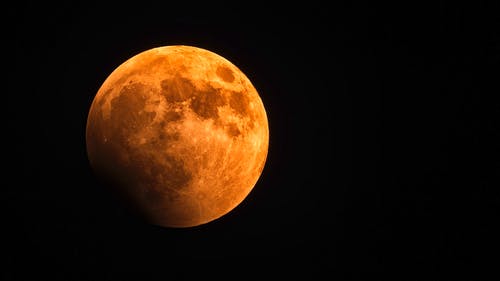
DYK – There is No ‘Dark Side’ of the Moon


There is no one side of the Moon that is in perpetual darkness.
Though they didn’t come up with the expression, Pink Floyd made ‘The Dark Side of the Moon’ famous in 1973 when they released an album with the same name. The band, an epitome of coolness and Rock and Roll, has been responsible for confusing kids in science class from kindergarten to college ever since.
The ‘Far Side’ of the moon is the side that is always facing away from us.
Because the speed that the moon spins matches speed that it is moving as it travels around the earth, the same side of the moon is always facing the earth. To understand how that works, try walking in circles around one of your parents while always facing them. Because you are turning, or ‘spinning’ to face them at the same speed that you are going around them, you are always facing them. If you turn too slow you might not be able to see them and they could tickle you while you’re not looking. If you spin too fast you will mostly just get really dizzy, which, while a lot of fun, is not what the moon is doing.

Even though we are always looking at the same side of the moon, both the Near Side (the side we see every day) and the Far Side (the side we don’t) get sunlight. So neither one of them is always ‘Dark’. They get sunrise and sunsets, daytime and nighttime, just like we do here on earth.
Which is a really good thing! Because if we ever wanted to move to the moon it would be really annoying if it was always sunny on only one side, you would never be able to sleep! Plus it would probably get really hot on that side too.
For more cool stuff about the moon, keep reading! Or, check out one of our other articles here. There are more ‘Did You Know’s’, Fun Recipes, Crafts, or great Book Recommendations available.
Other Lunar Fun Facts

- ‘Luna’ is the Latin word for moon. So any time something has to do with the moon, it is called ‘Lunar’. Examples; Lunar Eclipse, Lunar Landing, Lunar Module. Luna was also my favorite character in Harry Potter which means – the moon is a girl!
- Bigger is Better. Other Planets might have more than one moon, but our moon is bigger than any of the other in our solar system compared to the size of the planet! Because our moon is so big compared to us, the gravitational pull creates high and low tide. Some scientists think that without this, complex life could have never formed on earth.
- The Moon is Camera Shy. The reason why it is so hard to get a good picture of the moon when it is full is that it is reflecting so much light from the sun that it actually makes our cameras “squint” in order to be able to see it.
- Lonely Luna. No one has visited the moon in almost FIFTY YEARS! (48 to be exact). The last time anyone visited the moon in person was in 1972. People have gone to space since then, but not to the moon. The only lunar missions have involved robots collecting samples for scientists to study. So maybe Wall-E has been keeping Luna company since then, or at least I like to think so.
- Regolith. Moon Dust is actually called, you guessed it, Regolith. Moondust is made up of a lot of the same stuff that the dust in your house is, only without all the bits from people. Tiny microscopic space fragments from meteors and asteroids and bits of carbon. Lunar Regolith is so light and powdery that the astronauts were scared they would sink right through it when they landed on the moon. This astronaut sank all the way up to his ankles!

There is a Full Moon tonight! (Friday, January 10th) In South Florida, the moon will rise right around the same time as sunset, 6 pm and won’t set again until 7 am the next morning. Talk about pulling an all nighter!
Check out this and more original content available every week at TheNerdyNanny.com by subscribing to us on Facebook or Instagram.
You can also check out Eve Daniels, author of The Nerdy Nanny books, on YouTube where she gives writing and academic advice as well as updating you on all of her latest and upcoming projects.

This article is a gem. I’ve bookmarked it for future reference. Thanks for the valuable insights!